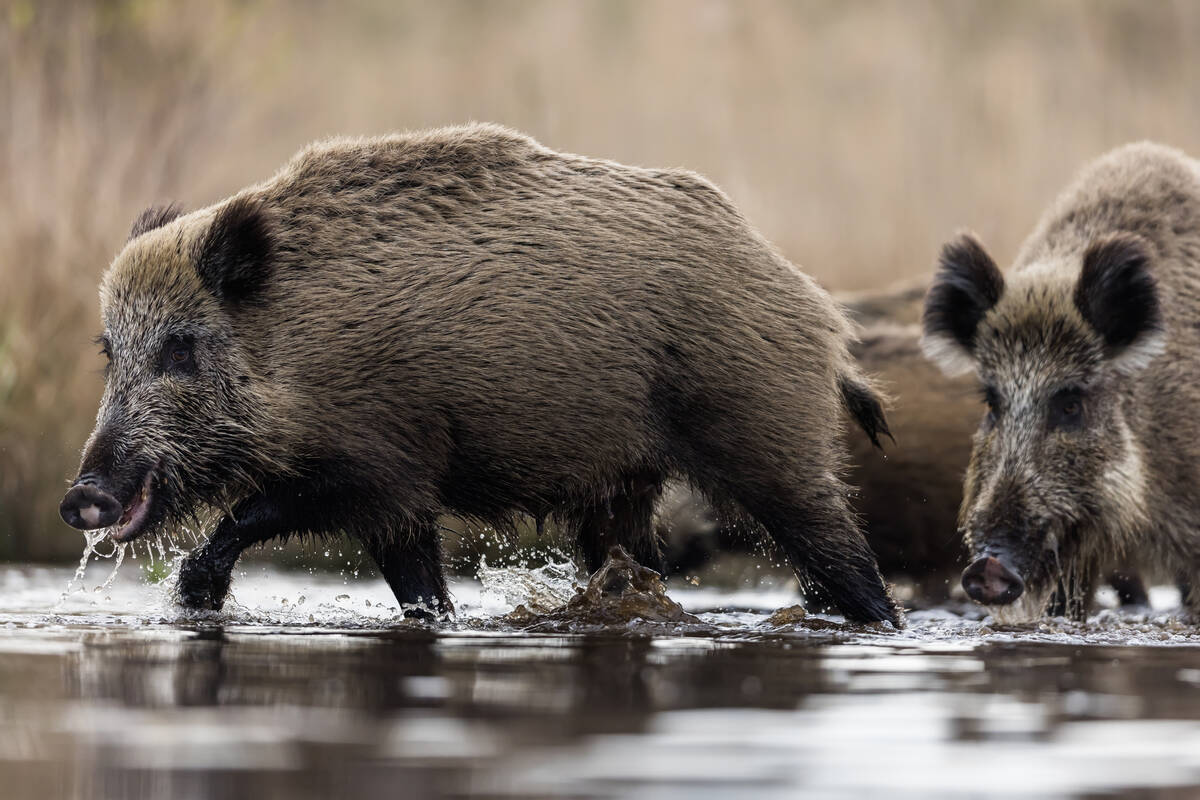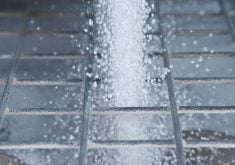Simplicity in the manufacturing process dictated that front power take-off systems would turn counter-clockwise when the first machines came to market in Germany 50 years ago.
As well, only Deutz and Fendt were building the mowers that farmers bought for their tractors, which meant they could build them to turn any direction they wanted.
“Rear p.t.o. speeds were already standardized as either 540 r.p.m. or 1,000 r.p.m.,” said Lars Paulsson of Lafarge FrontPower.
“Using a two-gear gearbox, they decided to go for 1,000 r.p.m., but the p.t.o. ended up going the opposite direction from the rear p.t.o. No problem. Both companies also made the mowers. Their p.t.o. wasn’t intended for any other implement, so counter-clockwise would work just fine.”
Read Also

Manitoba bans wild boar possession
Manitoba has tightened the regulatory status of Eurasian wild boar in an effort to help fight back against invasive wild pigs.
The new system was highly efficient, and front p.t.o. was greatly appreciated.
Farmers still lived in small villages with their barn and a few cows in those simpler days. They drove their equipment to their fields every day to cut some hay with the new front mounted mower, pile it onto the self-loading wagon at the rear of the tractor and then head home to feed the cows.
Even today, most front p.t.o. systems in Germany, Austria and the Netherlands abide by the old DIN standard that states a front p.t.o. rotates counter-clockwise at 1,000 r.p.m. using the 35 millimetre, six-spline shaft that dates back to the Second World War.
This shaft became the standard because that’s what Deutz and Fendt happened to have in excess in their parts bin at the time.
However, farmers and engineers in Scandinavia, Britain and France wanted their front p.t.o. drives to turn the same direction as their rear p.t.o. so their regular rear implements could be used at the front.
Versatile forced a decision in the 1980s when it introduced the bi-directional tractor.
The International Organization for Standardization (ISO) worked out a compromise with manufacturers that required front p.t.o. shafts to turn clockwise at 1,000 r.p.m. with a standard 21-spline, 35 mm shaft identical to that at the rear.
“You open yourself up to significant liability exposure if you offer equipment that doesn’t meet industry standards,” Paulsson said.
North American customers demand p.t.o. systems that can work with readily available implements that are used with a rear p.t.o.
German tractor manufacturers have been lobbying recently to have the ISO standard relaxed. Fendt especially has been active in this and it looks like they have succeeded in convincing John Deere and CNH to go along with relaxing the standard and allow every which way of rotation, size of shaft and spline design.
“It’s going to be misery for the North American customer, in my opinion. Nobody in the publishing business has caught this yet because front p.t.o. is such a small segment. But for affected customers and dealers, it’s going to spell trouble.”















